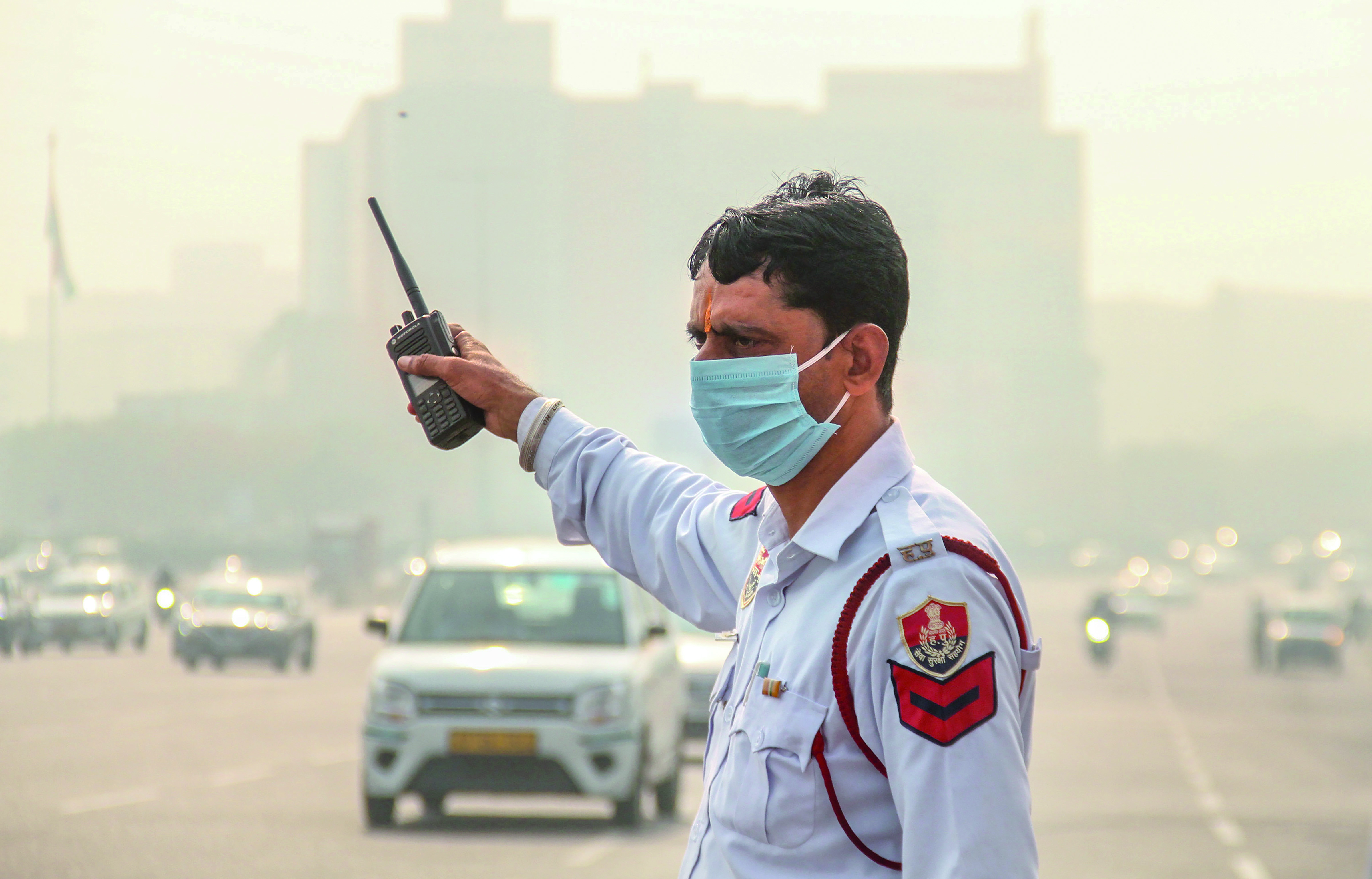Delhi: GRAP stage 1 enforced, firecrackers banned until Jan 1

New Delhi: As Delhiites endured a second consecutive day of poor air quality, with pollution levels reaching a reading of 234 on Monday, authorities swung into action to mitigate the rising smog. The Central Pollution Control Board (CPCB) data placed the Capital’s Air Quality Index (AQI) in the “poor” category, prompting the Centre’s air pollution control panel for Delhi-NCR to direct state governments to implement Stage 1 of the Graded Response Action Plan (GRAP). This comes on the heels of the Delhi government’s announcement of a complete ban on firecrackers until January 1.
The AQI reading of 224 on Sunday, recorded after the Dussehra celebrations, marked Delhi’s re-entry into the “poor” air quality category, 19 days since the last similar reading on September 25. With winter approaching and pollution levels expected to rise further, authorities have made early interventions to control the situation.
Stage 1 of the GRAP, which is triggered when the AQI falls between 201 and 300, is designed to curb pollution by enforcing several winter-specific anti-pollution measures. These measures focus on mitigating dust from construction activities, improving waste management, and enhancing road cleaning. In addition, strict checks on polluting vehicles and emission controls in industries, power plants, and brick kilns are key components of Stage 1 enforcement.
As per the directive, state governments in Uttar Pradesh, Haryana, Rajasthan, and Delhi have been instructed to begin implementing these measures from Tuesday morning. The restrictions also include a ban on the use of diesel generators, open burning of waste, and coal or firewood at eateries. The GRAP system has four stages, ranging from “Poor” (AQI 201-300) to “Severe Plus” (AQI above 450), with each stage bringing progressively stringent measures.
The current spike in pollution levels is compounded by a rise in stubble-burning incidents across northern India, a key contributor to Delhi’s deteriorating air quality each winter.
Data from the CPCB shows that more than 100 farm fires were recorded between October 10 and 13, predominantly in Punjab and Haryana.
On Monday alone, Punjab reported 68 farm fires, Haryana recorded 29, Uttar Pradesh saw 25, and one such incident was reported in Delhi itself.
The issue of stubble burning, though addressed repeatedly by authorities, continues to be a persistent problem each year, adding to the capital’s woes as crop residue burning sends plumes of smoke across the northern plains.
In a decisive move aimed at curbing pollution during the festival season, the Delhi government has banned the production, storage, sale, and use of all kinds of firecrackers within the city limits until January 1.
The ban is comprehensive, extending to online sales as well, and comes ahead of the winter months when pollution levels are traditionally at their worst. Announcing the ban, Delhi Environment Minister Gopal Rai urged citizens to cooperate in the fight against pollution. “In view of the increasing pollution in winter, a ban has been imposed on the production, storage, sale, and use of firecrackers from today till January 1,” Rai said in a post on X (formerly Twitter).
He stressed that the move was essential to reduce the burden on Delhi’s already strained air quality, particularly during the festival season when the use of firecrackers significantly worsens pollution levels.
To ensure compliance, the Delhi Pollution Control Committee has issued detailed guidelines, and the Delhi Police have been tasked with enforcing the ban. Authorities will also implement a 21-point plan aimed at tackling pollution from key sources such as dust, transportation emissions, and biomass burning.
The AAP govt is also planning to procure mist-spraying drones this winter to target the pollution hotspots in the city, officials said on Monday. In a bid to combat air pollution, these drones will have sensors to record air quality data, including measurements of PM2.5 and PM10, and help reduce dust levels.
Officials familiar with the initiative confirmed that a tender has been floated by the environment department for the acquisition of three drones designed to operate from above the city’s most polluted areas.
The drones will primarily be used to monitor local sources of air pollution from a height while gathering critical air-quality information.



